
Puerto Princesa: The Tropical Heart of Palawan
Discover Puerto Princesa, the vibrant heart of Palawan, where breathtaking natural wonders meet rich cultural heritage and eco-friendly adventures await.
Nestled in the heart of Palawan, Puerto Princesa is a tropical paradise that offers a charming mix of natural beauty and vibrant local culture. Known as the 'City in a Forest,' Puerto Princesa is a haven for nature lovers, boasting lush landscapes, pristine beaches, and crystal-clear waters. Its most famous attraction, the Puerto Princesa Subterranean River National Park, is a UNESCO World Heritage site and one of the New 7 Wonders of Nature. Here, visitors can explore the awe-inspiring underground river, which winds through a spectacular cave system adorned with stalactites and stalagmites. Beyond its natural wonders, Puerto Princesa offers a rich tapestry of cultural experiences. The city’s lively markets, such as the Puerto Princesa City Baywalk Park, are perfect for sampling local delicacies and shopping for handmade crafts. The Cathedral of the Immaculate Conception, with its striking blue facade, is a must-visit landmark that offers a glimpse into the city’s colonial past. For those interested in history, the Palawan Heritage Center provides a deep dive into the island's indigenous culture and history. Puerto Princesa is also a gateway to some of the best diving spots in the Philippines. Honda Bay, with its stunning islets and vibrant coral reefs, is ideal for snorkeling and diving. The bay’s clear waters are teeming with marine life, making it a paradise for underwater enthusiasts. Additionally, the city’s eco-friendly tourism initiatives and sustainable practices make it a model destination for responsible travelers.
Local tips in Puerto Princesa
- Visit the Puerto Princesa Subterranean River National Park early in the morning to avoid crowds and experience the tranquil beauty of the underground river.
- Try the local delicacy, Tamilok, a woodworm mollusk often served as a ceviche. It's an adventurous treat for the palate!
- Use eco-friendly sunblock when visiting beaches and diving sites to help protect the coral reefs and marine life.
- Hire a local guide when exploring the mangrove forests and wildlife sanctuaries for an informative and safe experience.
- ATMs and banks are limited, especially on the outskirts. Make sure to carry enough cash for your day trips and island hopping tours.
Puerto Princesa: The Tropical Heart of Palawan
Nestled in the heart of Palawan, Puerto Princesa is a tropical paradise that offers a charming mix of natural beauty and vibrant local culture. Known as the 'City in a Forest,' Puerto Princesa is a haven for nature lovers, boasting lush landscapes, pristine beaches, and crystal-clear waters. Its most famous attraction, the Puerto Princesa Subterranean River National Park, is a UNESCO World Heritage site and one of the New 7 Wonders of Nature. Here, visitors can explore the awe-inspiring underground river, which winds through a spectacular cave system adorned with stalactites and stalagmites. Beyond its natural wonders, Puerto Princesa offers a rich tapestry of cultural experiences. The city’s lively markets, such as the Puerto Princesa City Baywalk Park, are perfect for sampling local delicacies and shopping for handmade crafts. The Cathedral of the Immaculate Conception, with its striking blue facade, is a must-visit landmark that offers a glimpse into the city’s colonial past. For those interested in history, the Palawan Heritage Center provides a deep dive into the island's indigenous culture and history. Puerto Princesa is also a gateway to some of the best diving spots in the Philippines. Honda Bay, with its stunning islets and vibrant coral reefs, is ideal for snorkeling and diving. The bay’s clear waters are teeming with marine life, making it a paradise for underwater enthusiasts. Additionally, the city’s eco-friendly tourism initiatives and sustainable practices make it a model destination for responsible travelers.
When is the best time to go to Puerto Princesa?
Iconic landmarks you can’t miss
Puerto Princesa Subterranean River National Park
Explore the breathtaking Puerto Princesa Subterranean River National Park, a UNESCO World Heritage site offering stunning landscapes and incredible biodiversity.
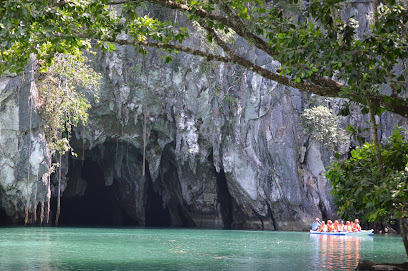
Puerto Princesa City Baywalk Park
Experience the beauty and culture of Puerto Princesa City at Baywalk Park, a serene destination for relaxation, culinary delights, and stunning coastal views.
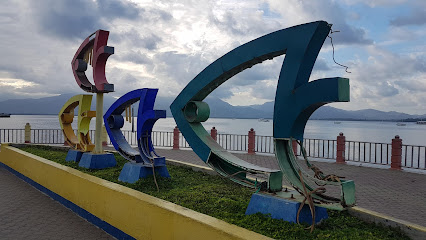
Robinsons Palawan
Experience the vibrant shopping scene at Robinsons Palawan, where local culture meets modern retail joy in Puerto Princesa.
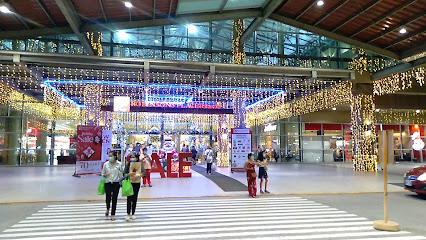
Palawan Butterfly Ecological Garden and Tribal Village
Discover the enchanting Palawan Butterfly Ecological Garden and Tribal Village, a vibrant blend of nature's beauty and rich tribal culture in Puerto Princesa.
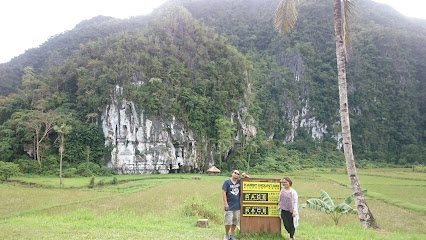
Badjao Seafront Restaurant
Experience the fresh seafood and stunning views at Badjao Seafront Restaurant in Puerto Princesa, a must-visit culinary destination in Palawan.

Princesa Garden Island Resort and Spa
Discover the ultimate getaway at Princesa Garden Island Resort and Spa, where luxury meets nature in beautiful Puerto Princesa, Palawan.
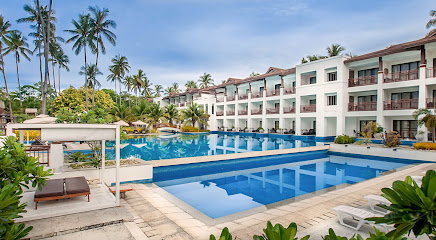
Mendoza Park
Discover the tranquility of Mendoza Park, an urban oasis in Puerto Princesa, perfect for relaxation and cultural immersion.
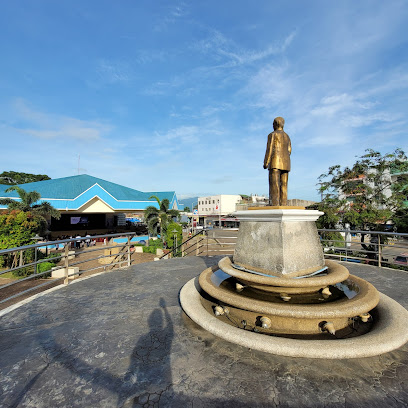
Mitra's Ranch
Experience the breathtaking views and local charm at Mitra's Ranch in Puerto Princesa, a serene retreat in the heart of Palawan.
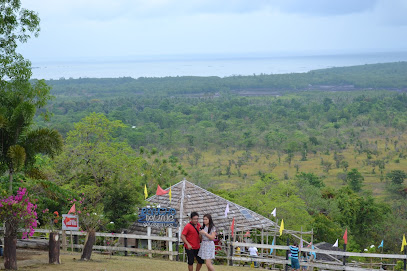
Immaculate Conception Cathedral
Experience the stunning architecture and spiritual atmosphere of the Immaculate Conception Cathedral, a must-visit tourist attraction in Puerto Princesa, Palawan.
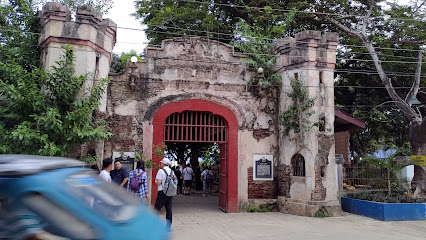
Luli Island
Experience the tropical paradise of Luli Island, a serene escape in Puerto Princesa, renowned for its pristine beaches and vibrant marine life.
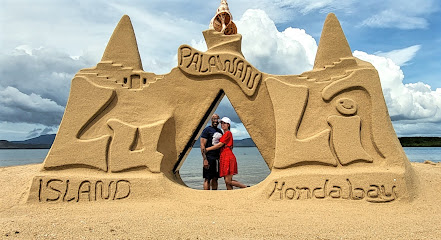
Plaza Cuartel
Discover Plaza Cuartel in Puerto Princesa, a historical site steeped in WWII history, where beauty and reflection meet.
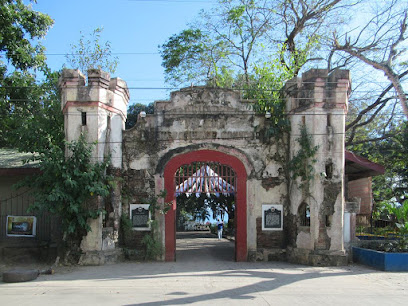
Puerto Princesa City Coliseum(City Coliseum)
Discover the heart of sports and culture at Puerto Princesa City Coliseum, a vibrant venue for events in Palawan's capital.
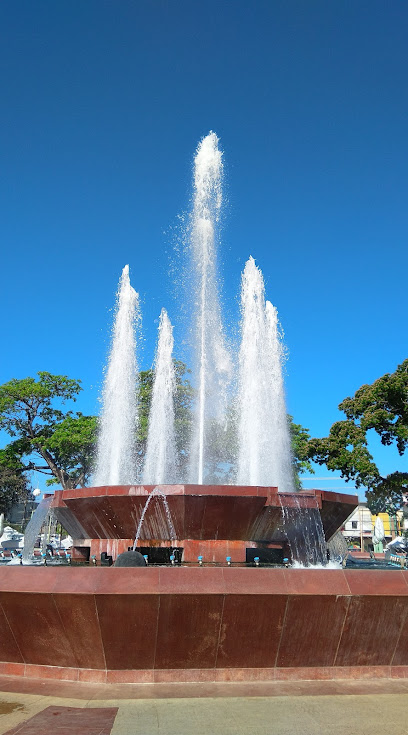
MCA Market Mall
Explore MCA Market Mall in Puerto Princesa for a unique shopping experience blending local culture and diverse retail options.

UGONG ROCK ADVENTURES
Experience the thrill of Ugong Rock Adventures in Puerto Princesa, Palawan - where nature meets adrenaline in a breathtaking setting.
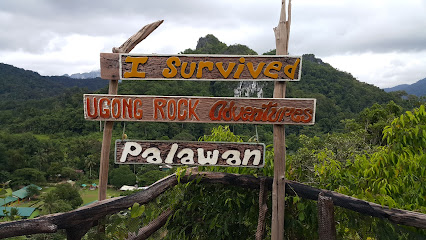
Puerto Princesa Subterranean River
Explore the enchanting Puerto Princesa Subterranean River, a UNESCO World Heritage site and one of the New 7 Wonders of Nature, in the heart of Palawan.
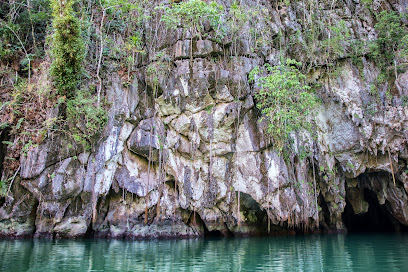
Unmissable attractions to see
Puerto Princesa City Baywalk Park
Experience the beauty and culture of Puerto Princesa at Baywalk Park, a serene waterfront destination perfect for relaxation and exploration.
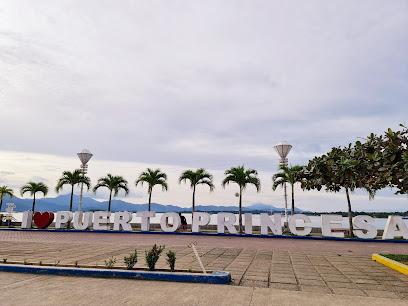
Puerto Princesa Subterranean River National Park
Explore the stunning Puerto Princesa Subterranean River National Park, a UNESCO World Heritage Site with breathtaking underground rivers and rich biodiversity.
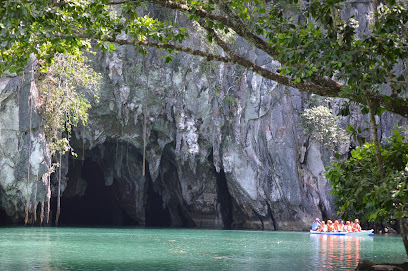
Palawan Wildlife Rescue and Conservation Center (Crocodile Farm)
Experience the beauty of conservation at Palawan Wildlife Rescue and Conservation Center, where you can connect with nature and learn about wildlife protection.
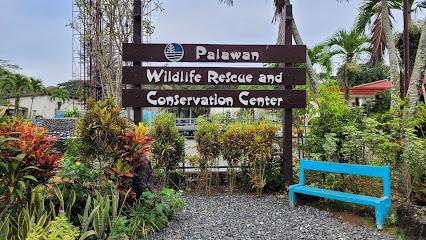
Palawan Butterfly Ecological Garden and Tribal Village
Discover the enchanting world of butterflies and the rich cultural heritage of Palawan at this unique ecological garden and tribal village.
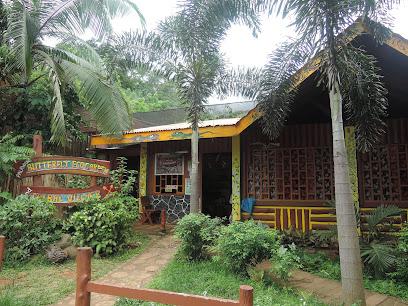
Mendoza Park
Discover the lush beauty and vibrant culture of Mendoza Park, a serene urban oasis in the heart of Puerto Princesa, Palawan.
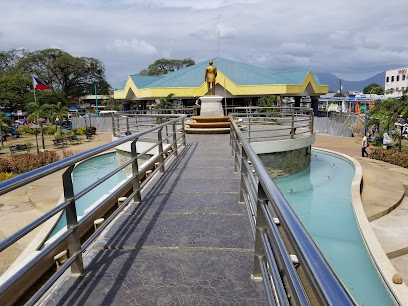
Luli Island
Explore Luli Island in Puerto Princesa, Palawan - a tropical paradise with pristine beaches, stunning biodiversity, and unforgettable island adventures.

Plaza Cuartel
Discover the rich history and serene beauty of Plaza Cuartel, a must-visit historical site in Puerto Princesa, Palawan, Philippines.
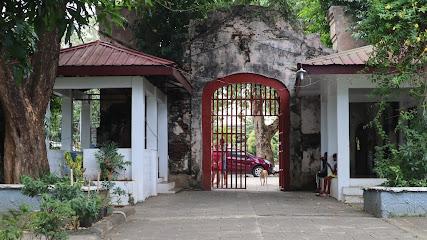
Dos Palmas Island Resort & Spa
Discover the enchanting Dos Palmas Island Resort & Spa in Honda Bay, Palawan, where luxury meets nature for an unforgettable tropical escape.

UGONG ROCK ADVENTURES
Experience the thrill of adventure and natural beauty at UGONG Rock Adventures in Puerto Princesa, Palawan - a must-visit for all travelers.
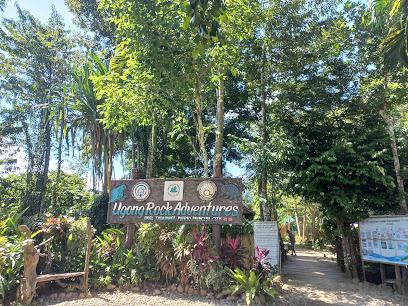
Puerto Princesa Subterranean River
Explore the breathtaking Puerto Princesa Subterranean River, an underground marvel and UNESCO World Heritage site, rich in biodiversity and stunning landscapes.
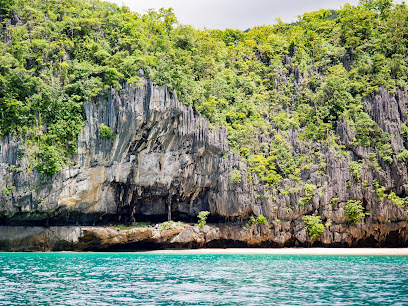
Sabang Mangrove Forest
Discover the enchanting beauty of Sabang Mangrove Forest, a UNESCO World Heritage Site in Puerto Princesa, celebrated for its rich biodiversity and serene landscapes.
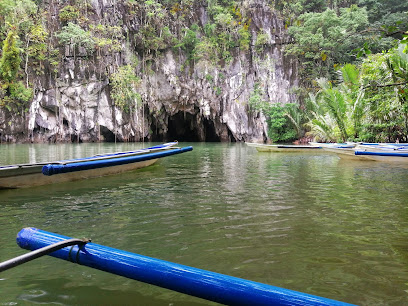
Puerto Princesa City Baywalk Christmas Tree
Experience the festive charm of Puerto Princesa City Baywalk Christmas Tree, a vibrant hub of culture, beauty, and holiday spirit in the heart of Palawan.
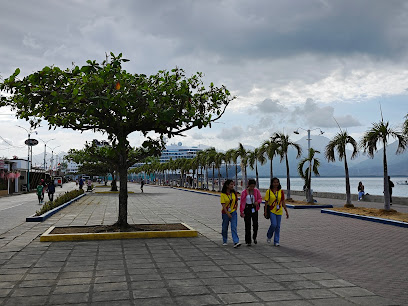
Palawan Heritage Center
Explore the Palawan Heritage Center in Puerto Princesa, a museum showcasing the rich history and culture of the Philippines' stunning Palawan Island.
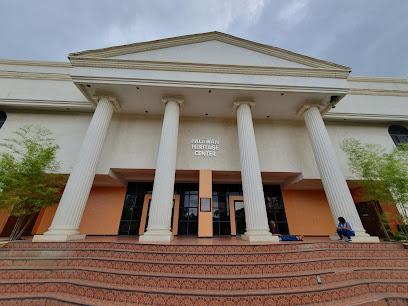
Kuyba Almoneca
Explore the serene beauty and historical significance of Kuyba Almoneca in Puerto Princesa, Palawan - a tranquil retreat for nature and culture lovers.
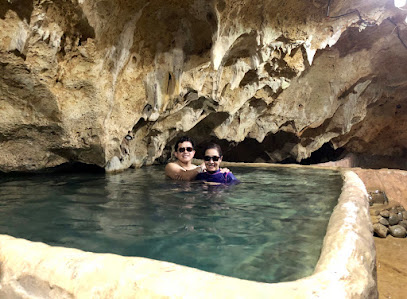
Palawan Special Battalion WW-II Memorial Museum
Discover the poignant history of WWII through the Palawan Special Battalion Museum, a must-visit in Puerto Princesa, Palawan, for history enthusiasts.
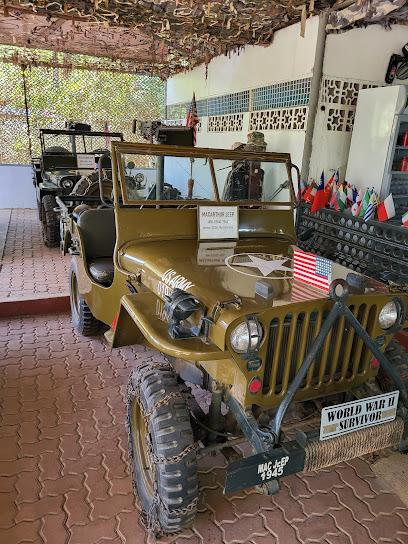
Essential places to dine
Kinabuchs Grill and Bar
Discover Kinabuchs Grill and Bar: A must-visit destination in Puerto Princesa for grilled delights and refreshing drinks.

Kalui Seafood Restaurant
Discover the flavors of Palawan at Kalui Seafood Restaurant in Puerto Princesa - where fresh seafood meets vibrant local culture.
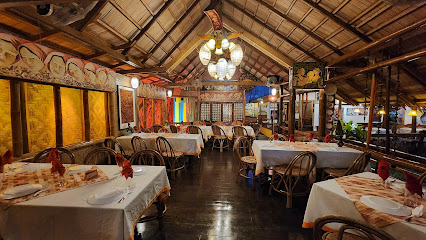
Badjao Seafront Restaurant
Discover breathtaking ocean views and authentic Filipino cuisine at Badjao Seafront Restaurant in Puerto Princesa.
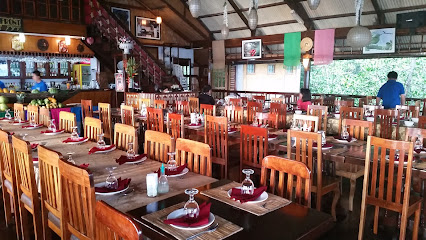
Ka Inato Main Branch
Experience authentic Filipino flavors at Ka Inato Main Branch in Puerto Princesa - a culinary journey that delights every palate.
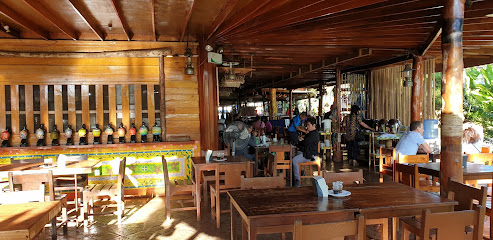
Ka Joel's Restaurant
Discover authentic Filipino flavors at Ka Joel's Restaurant in Puerto Princesa - a culinary experience not to be missed during your visit.
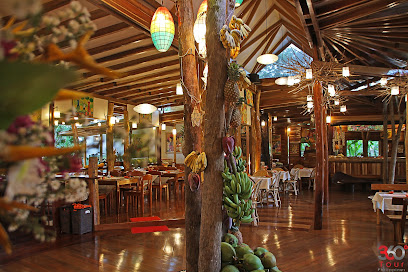
Viet Ville Restaurant
Discover the vibrant tastes of Vietnam at Viet Ville Restaurant in Puerto Princesa – where every dish tells a story.
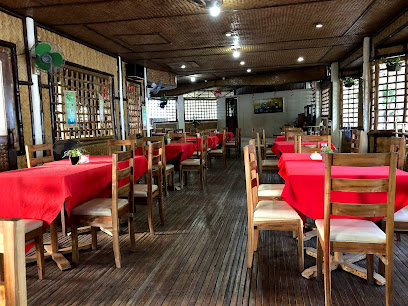
Noki Nocs Savory House
Discover authentic Filipino flavors at Noki Nocs Savory House in Puerto Princesa – where culinary tradition meets modern comfort.

Artisans
Discover Artisans in Puerto Princesa for an unforgettable dining experience blending local flavors with international flair.
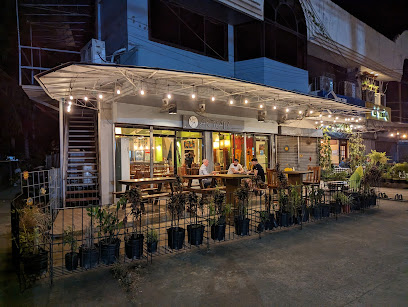
Ima's Vegetarian Restaurant
Discover healthy indulgence at Ima's Vegetarian Restaurant in Puerto Princesa—where fresh local ingredients meet delightful vegetarian cuisine.
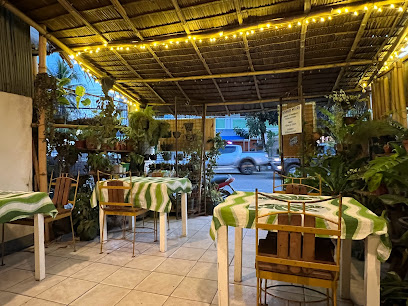
CAPTAIN RIBS
Experience the flavors of Palawan at Captain Ribs – where delicious grilled dishes meet vibrant local culture in Puerto Princesa.
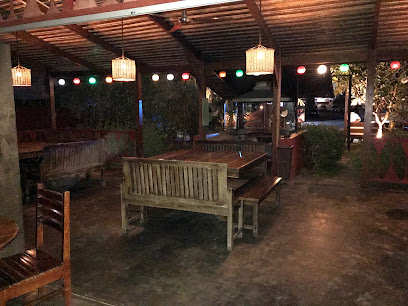
Ver De Puerto Princesa
Experience authentic Filipino flavors with a modern twist at Ver De Puerto Princesa – a must-visit dining destination in Palawan.
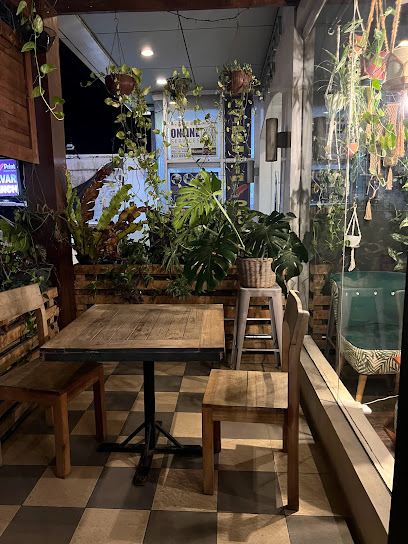
NomNom Comfort Food
Experience the best comfort food in Puerto Princesa at NomNom Comfort Food – where local flavors meet delightful ambiance.
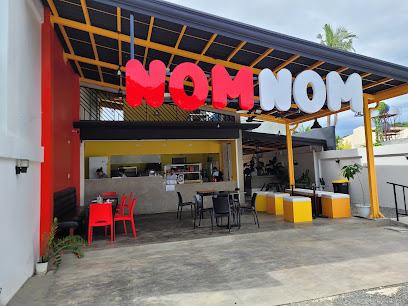
HAPAG by Balinsasayaw
Discover the authentic flavors of Filipino cuisine at HAPAG by Balinsasayaw in Puerto Princesa, where every meal tells a story.
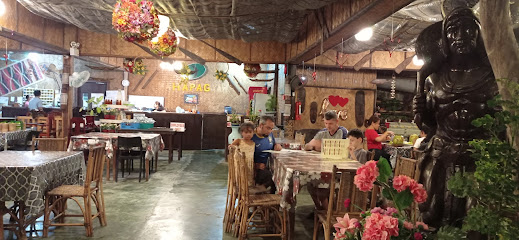
Tataboom Bar & Restaurant
Discover Tataboom Bar & Restaurant in Puerto Princesa – your go-to spot for delicious food, refreshing drinks, and live entertainment.
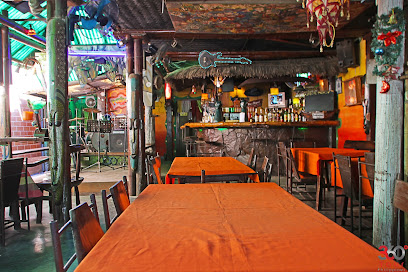
Namaskar Vegetarian House
Experience vibrant vegetarian cuisine at Namaskar Vegetarian House in Puerto Princesa - where local flavors meet innovative cooking.

Markets, malls and hidden boutiques
SM City Puerto Princesa
Explore SM City Puerto Princesa: a vibrant shopping mall offering diverse retail, dining, and entertainment options in the heart of Palawan.
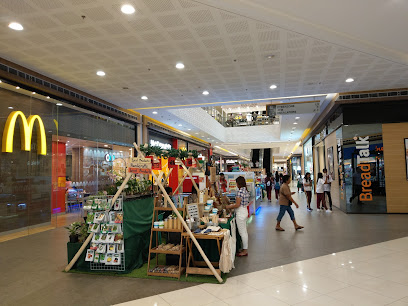
MCA Market Mall
Explore MCA Market Mall in Puerto Princesa for a vibrant shopping experience filled with local crafts, delicious food, and lively atmosphere.
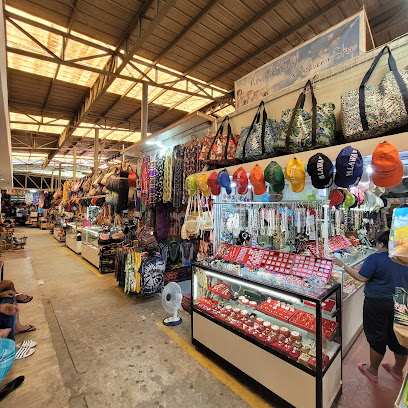
Old Public Market
Explore the Old Public Market in Puerto Princesa for fresh produce, local crafts, and an authentic taste of Palawan culture.

UNITOP
Discover UNITOP in Puerto Princesa - your ultimate shopping destination for groceries, home goods, and unique local souvenirs.
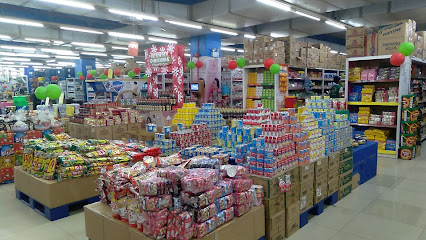
Binuatan Creations
Explore Binuatan Creations in Puerto Princesa for unique handcrafted gifts and authentic Filipino souvenirs that embody local artistry and culture.
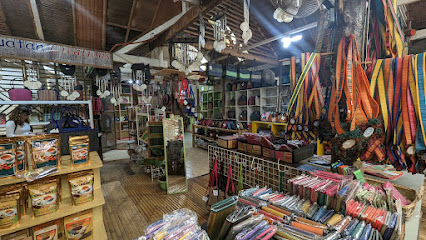
Robinsons Department Store Palawan
Discover a world of shopping at Robinsons Department Store Palawan with everything from local treasures to international brands all in one spot.
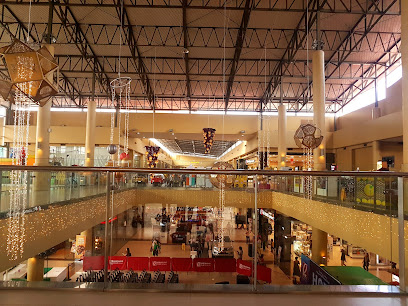
Palawan Authenticity South Sea Pearl Shop
Explore the exquisite collection of authentic South Sea pearl jewelry in Puerto Princesa's hidden gem, the Palawan Authenticity South Sea Pearl Shop.
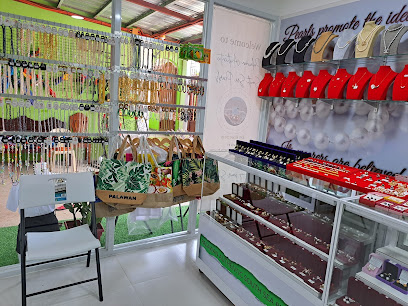
Parangue Store
Explore Parangue Store in Puerto Princesa for unique home goods and authentic local craftsmanship that embodies the spirit of Palawan.
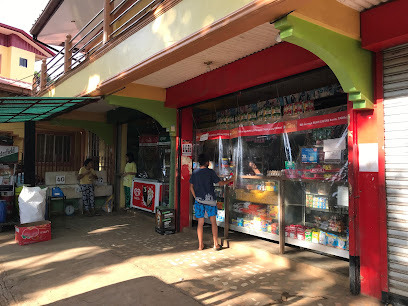
Islands Souvenirs
Discover authentic local crafts and traditional snacks at Islands Souvenirs, your go-to souvenir store in Puerto Princesa, Palawan.
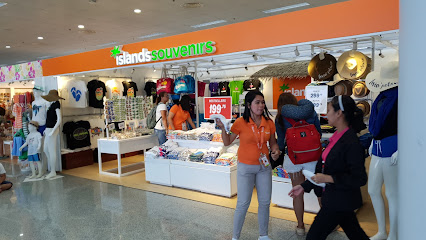
Pasalubong Center
Explore Pasalubong Center in Puerto Princesa for unique handcrafted souvenirs and local delicacies that capture the spirit of Palawan.
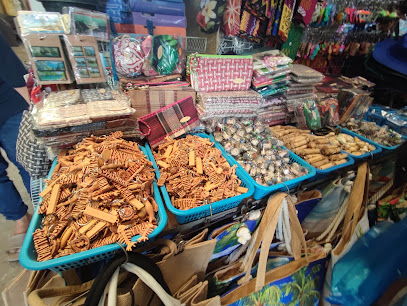
Juness Store
Explore Juness Store in Puerto Princesa for unique home goods that reflect local culture and craftsmanship—perfect for souvenirs and gifts.
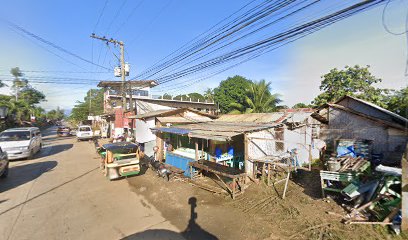
Primer Cothing Boutique
Explore stylish local fashion at Primer Clothing Boutique in Puerto Princesa, offering unique clothing that captures the essence of Palawan.

Kultura Filipino - SM City Puerto Princesa
Explore Kultura Filipino in SM City Puerto Princesa for unique souvenirs and handicrafts that embody the spirit of the Philippines.
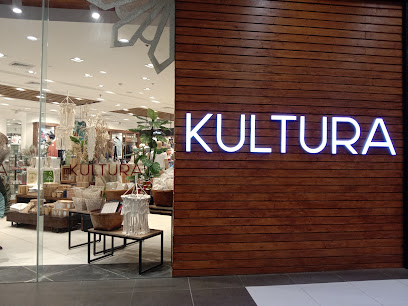
MSM Building
Explore the MSM Building Gift Shop in Puerto Princesa for unique local crafts and souvenirs that capture the essence of Palawan's vibrant culture.
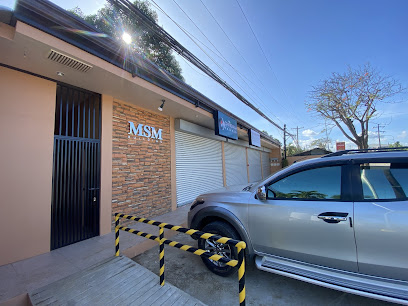
BemRoseMay Souvenir Shop
Explore BemRoseMay Souvenir Shop in Puerto Princesa for authentic handicrafts and unique gifts that celebrate the spirit of Palawan.
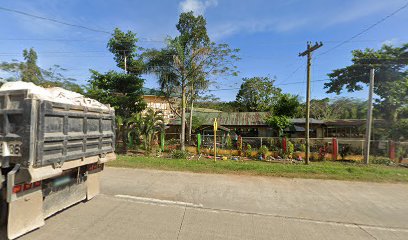
Essential bars & hidden hideouts
Kinabuchs Grill and Bar
Experience the vibrant culinary scene of Puerto Princesa at Kinabuchs Grill and Bar, where local flavors and warm hospitality await.
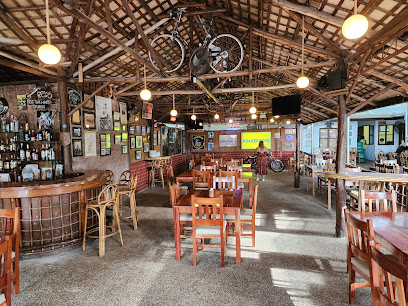
Tiki Resto Bar
Discover the tropical allure and vibrant nightlife at Tiki Resto Bar in Puerto Princesa, a top destination for crafted cocktails and live entertainment.
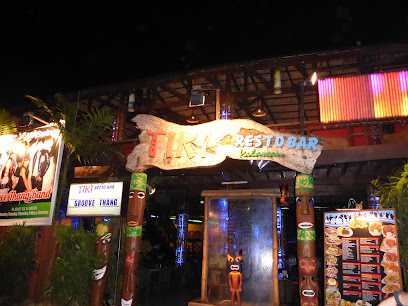
Tataboom Bar & Restaurant
Experience vibrant nightlife at Tataboom Bar & Restaurant in Puerto Princesa, where delicious food meets live music in a tropical setting.
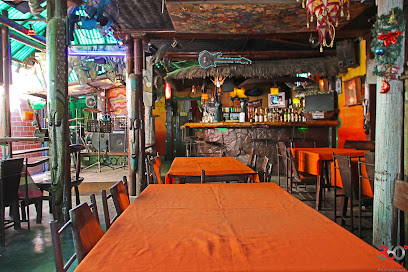
Aztec Grounds Bar
Experience the vibrant nightlife of Puerto Princesa at Aztec Grounds Bar, where delicious grilled food meets live music and a lively atmosphere.
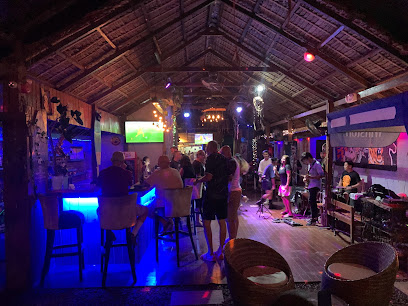
Blue Pinoy Bar and Restaurant
Experience the authentic flavors of the Philippines at Blue Pinoy Bar and Restaurant in Puerto Princesa - a must-visit for tourists seeking a delightful dining experience.
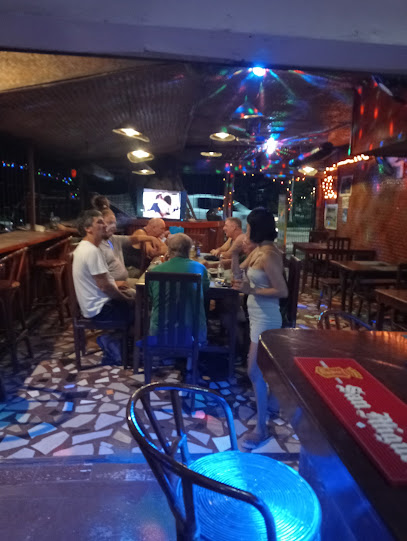
Chez Rose Beach Bar
Experience the vibrant ambiance and stunning ocean views at Chez Rose Beach Bar, your perfect retreat in Puerto Princesa.
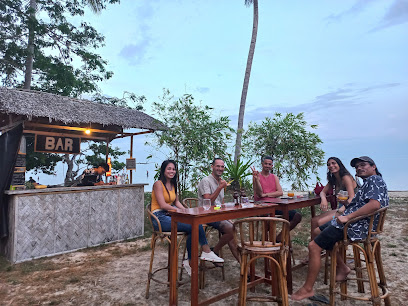
Hibiscus Restaurant and Bar
Discover the tropical charm of Hibiscus Restaurant and Bar in Puerto Princesa, where delicious flavors meet a lush garden ambiance.
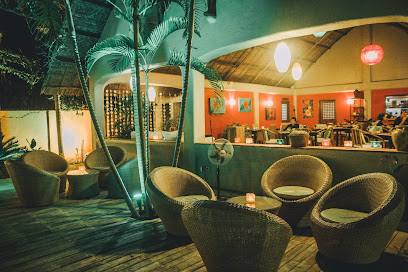
J1 Bar and Resto
Discover vibrant nightlife at J1 Bar and Resto in Puerto Princesa, where refreshing drinks and lively music create unforgettable evenings.
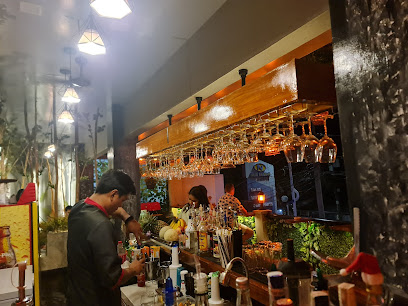
108 Bar
Experience the vibrant nightlife of Puerto Princesa at 108 Bar, where refreshing drinks and a lively atmosphere await.
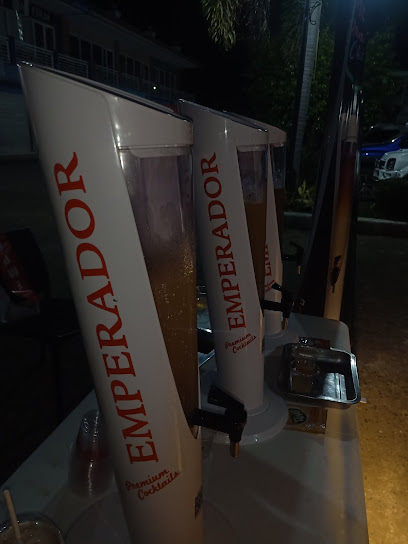
Rebay Videoke Bar
Experience the vibrant nightlife of Puerto Princesa at Rebay Videoke Bar, where singing, laughter, and great company come together for an unforgettable evening.
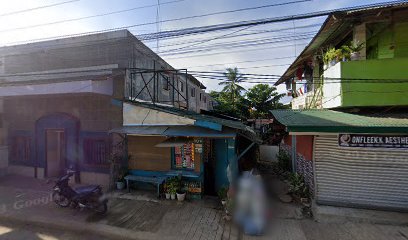
I/O Bar and Restaurant
Experience the vibrant nightlife of Puerto Princesa at I/O Bar and Restaurant with great drinks, tasty bites, and a lively atmosphere.
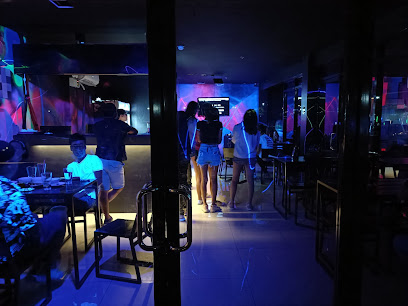
The Boss Pub and Grill
Experience the lively atmosphere and delicious local dishes at The Boss Pub and Grill in Puerto Princesa, a vibrant nightlife destination in Palawan.

Priscilla's Restobar
Indulge in delightful grilled specialties and a vibrant atmosphere at Priscilla's Restobar in Puerto Princesa, a culinary gem in Palawan.
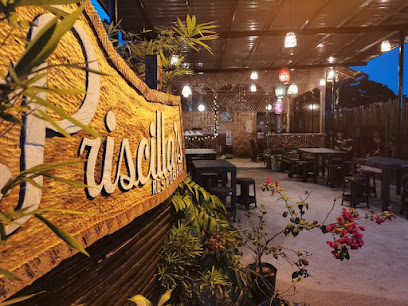
hotlegs bar
Experience the vibrant nightlife at Hotlegs Bar in Puerto Princesa, Palawan, where tropical drinks and live music create unforgettable evenings.
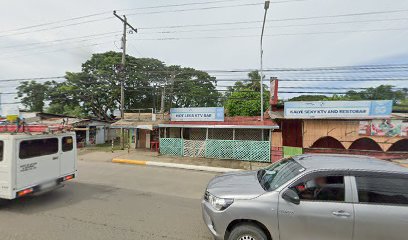
Pool Bar
Discover the Pool Bar in Puerto Princesa, a tropical pub oasis offering refreshing drinks and a lively atmosphere by the pool.
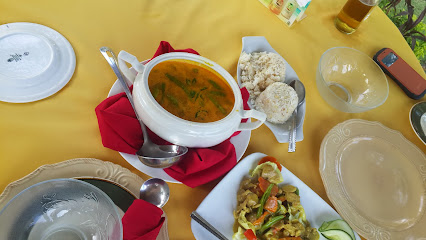
Local Phrases
-
- HelloKamusta
[ka-mu-sta] - GoodbyePaalam
[pa-a-lam] - YesOo
[o] - NoHindi
[hin-di] - Please/You're welcomePakiusap
[pa-ki-u-sap] - Thank youSalamat
[sa-la-mat] - Excuse me/SorryPasensya
[pa-sen-sya] - How are you?Kamusta ka?
[ka-mu-sta ka] - Fine. And you?Mabuti. Ikaw?
[ma-bu-ti i-kaw] - Do you speak English?Marunong ka mag-Ingles?
[ma-ru-nong ka mag-ing-gles] - I don't understandHindi ko maintindihan
[hin-di ko main-tin-di-han]
- HelloKamusta
-
- I'd like to see the menu, pleaseGusto ko pong makita ang menu
[gus-to ko pong ma-ki-ta ang me-nu] - I don't eat meatHindi ako kumakain ng karne
[hin-di a-ko ku-ma-kain ng kar-ne] - Cheers!Mabuhay!
[ma-bu-hay] - I would like to pay, pleaseGusto ko pong magbayad
[gus-to ko pong mag-ba-ya-d]
- I'd like to see the menu, pleaseGusto ko pong makita ang menu
-
- Help!Tulong!
[tu-long] - Go away!Lumayo ka!
[lu-ma-yo ka] - Call the Police!Tumawag sa pulis!
[tu-ma-wag sa pu-lis] - Call a doctor!Tumawag ng doktor!
[tu-ma-wag ng dok-tor] - I'm lostNawawala ako
[na-wa-wa-la a-ko] - I'm illMasama ang pakiramdam ko
[ma-sa-ma ang pa-ki-ram-dam ko]
- Help!Tulong!
-
- I'd like to buy...Gusto ko bumili ng...
[gus-to ko bu-mi-li ng] - I'm just lookingNagmamasid lang po ako
[nag-ma-ma-sid lang po a-ko] - How much is it?Magkano ito?
[mag-ka-no i-to] - That's too expensiveMasyadong mahal
[ma-sya-dong ma-hal] - Can you lower the price?Pwede bang ibaba ang presyo?
[pwe-de bang i-ba-ba ang pres-yo]
- I'd like to buy...Gusto ko bumili ng...
-
- What time is it?Anong oras na?
[a-nong o-ras na] - It's one o'clockAlas uno na
[a-las u-no na] - Half past (10)Alas dose y medya
[a-las do-se y med-ya] - MorningUmaga
[u-ma-ga] - AfternoonHapon
[ha-pon] - EveningGabi
[ga-bi] - YesterdayKahapon
[ka-ha-pon] - TodayNgayon
[nga-yon] - TomorrowBukas
[bu-kas] - 1Isa
[i-sa] - 2Dalawa
[da-la-wa] - 3Tatlo
[tat-lo] - 4Apat
[a-pat] - 5Lima
[li-ma] - 6Anim
[a-nim] - 7Pito
[pi-to] - 8Walo
[wa-lo] - 9Siyam
[siy-am] - 10Sampu
[sam-pu]
- What time is it?Anong oras na?
-
- Where's a/the...?Nasaan ang...
[na-sa-an ang] - What's the address?Ano ang address?
[a-no ang ad-dress] - Can you show me (on the map)?Pwede mo ba akong ipakita (sa mapa)?
[pwe-de mo ba a-kong i-pa-ki-ta sa ma-pa] - When's the next (bus)?Kailan ang susunod na (bus)?
[kai-lan ang su-su-nod na bus] - A ticket (to ....)Isang tiket (papuntang ...)
[i-sang ti-ket pa-pun-tang]
- Where's a/the...?Nasaan ang...
History of Puerto Princesa
-
Puerto Princesa, the capital city of Palawan, was founded in 1872 by Spanish colonizers. The city was named after Princess Asunción, the daughter of Queen Isabella II of Spain. It was originally established as a Spanish military base designed to protect the region from Muslim raiders.
-
During the American colonial period after the Spanish-American War in 1898, Puerto Princesa was transformed into a more organized town. The Americans introduced new systems of government, education, and infrastructure, which helped shape the city’s modern-day structure.
-
During World War II, Puerto Princesa was occupied by Japanese forces. One of the most harrowing events was the Palawan Massacre in December 1944, where Japanese troops killed around 150 American prisoners of war. This tragic event is commemorated by the Plaza Cuartel Memorial Park, located in the city.
-
After World War II, Puerto Princesa underwent significant reconstruction. The city continued to develop throughout the 20th century, with improvements in its infrastructure, healthcare, and educational systems. The construction of the Puerto Princesa International Airport was a major milestone, boosting tourism and economic growth.
-
One of Puerto Princesa's most significant contributions to natural heritage is the Puerto Princesa Subterranean River National Park, established in 1999. Recognized as a UNESCO World Heritage Site, the park features one of the world’s longest underground rivers, drawing international attention and tourists from around the globe.
-
Puerto Princesa is home to a rich tapestry of cultures, including indigenous tribes such as the Tagbanua, Batak, and Pala’wan. These tribes have lived in the region for centuries, maintaining their unique traditions, languages, and ways of life. Efforts to preserve their culture are evident in local museums and cultural programs.
-
In recent years, Puerto Princesa has become a model for environmental conservation in the Philippines. The city is known for its eco-friendly initiatives, including waste management programs and marine conservation efforts. The local government’s advocacy for sustainable tourism has earned Puerto Princesa the title of the 'Eco-Tourism Capital of the Philippines.'
Puerto Princesa Essentials
-
Puerto Princesa is accessible by air and sea. The Puerto Princesa International Airport (PPS) is the primary gateway, with several daily flights from Manila, Cebu, and other major Philippine cities. Airlines such as Philippine Airlines, Cebu Pacific, and AirAsia operate these routes. For a scenic journey, you can take a ferry from Manila or other islands to Puerto Princesa Port, although this option takes significantly longer.
-
Getting around Puerto Princesa is relatively easy. Tricycles are the most common form of local transport and are ideal for short distances within the city. For longer journeys, jeepneys and multicabs are available. Taxis are less common but can be found at the airport and major hotels. Renting a motorcycle or car is also an option if you prefer exploring at your own pace. Bicycle rentals are available for those who enjoy a more eco-friendly mode of transport.
-
The official currency in Puerto Princesa is the Philippine Peso (PHP). Credit cards are widely accepted in hotels, larger restaurants, and shops, but it is advisable to carry cash for smaller establishments and local markets. ATMs are available throughout the city, but it is wise to withdraw sufficient cash before heading to more remote areas.
-
Puerto Princesa is generally a safe destination for tourists. However, like any other city, it is essential to take standard safety precautions. Avoid walking alone at night in unfamiliar areas, and keep an eye on your belongings, especially in crowded places like public markets. While the city does not have specific high-crime areas targeting tourists, always remain vigilant and aware of your surroundings.
-
In case of emergencies, dial 911 for immediate assistance. Puerto Princesa has several hospitals and clinics, including the Ospital ng Palawan and Adventist Hospital Palawan. Pharmacies are also readily available for minor health issues. It is highly recommended to have travel insurance that covers medical emergencies.
-
Fashion: Do dress modestly, especially when visiting religious sites or rural areas. Lightweight and breathable clothing is advisable due to the tropical climate. Religion: Do respect local customs and traditions. When visiting churches, dress conservatively and behave respectfully. Public Transport: Do be polite and patient when using public transport. Don't expect strict schedules, as timings can be flexible. Greetings: Do greet people with a smile and a simple 'Hello' or 'Kumusta' (How are you?). A handshake is also acceptable. Eating & Drinking: Do try local cuisine and accept food offerings graciously. Don't waste food, as it is considered disrespectful.
-
To experience Puerto Princesa like a local, visit the local markets such as the Puerto Princesa City Public Market for fresh produce and local goods. Engage with locals, who are often friendly and willing to share stories about the city's culture and history. Don't miss the chance to explore the Puerto Princesa Subterranean River National Park, a UNESCO World Heritage Site, and take a boat tour of the Underground River. For a unique experience, visit Baker's Hill for local pastries and panoramic views.
Trending Landmark in Puerto Princesa
-
Puerto Princesa Subterranean River National Park
-
Puerto Princesa City Baywalk Park
-
Robinsons Palawan
-
Palawan Butterfly Ecological Garden and Tribal Village
-
Badjao Seafront Restaurant
-
Princesa Garden Island Resort and Spa
-
Mendoza Park
-
Mitra's Ranch
-
Immaculate Conception Cathedral
-
Luli Island
-
Plaza Cuartel
-
Puerto Princesa City Coliseum(City Coliseum)
-
MCA Market Mall
-
UGONG ROCK ADVENTURES
-
Puerto Princesa Subterranean River
Nearby Cities to Puerto Princesa
-
Things To Do in Palawan
-
Things To Do in Boracay
-
Things To Do in Sandakan
-
Things To Do in Zamboanga City
-
Things To Do in Kota Kinabalu
-
Things To Do in Tagaytay
-
Things To Do in Cebu City
-
Things To Do in Manila
-
Things To Do in Bohol
-
Things To Do in Subic
-
Things To Do in Angeles City
-
Things To Do in Camiguin
-
Things To Do in Legazpi
-
Things To Do in Cagayan de Oro
-
Things To Do in Muara













